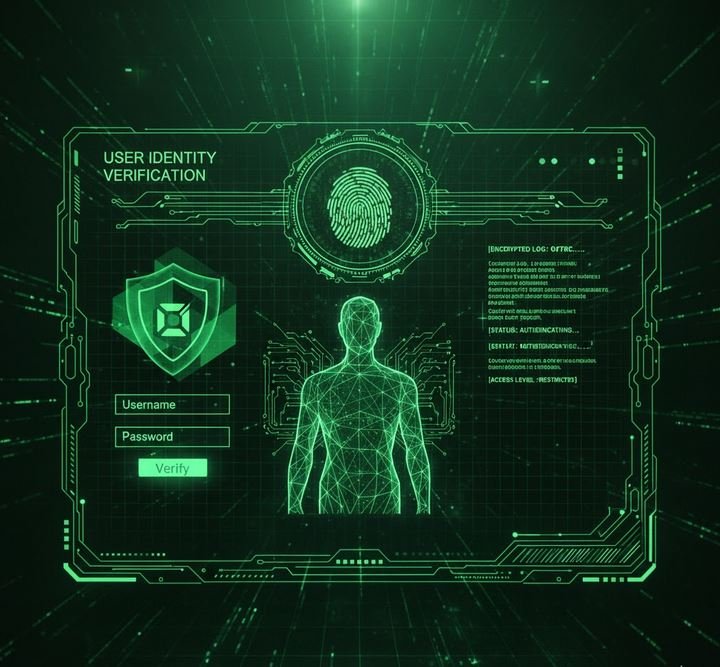
What is Personal Data?
Personal data encompasses any information that can be used to identify you, either directly or indirectly. This includes:
Direct Identifiers: Names, email addresses, phone numbers, home addresses, government identification numbers (e.g., social security numbers, passport numbers).
Indirect Identifiers: IP addresses, location data, browsing history, cookies, device identifiers, biometric data (fingerprints, facial scans).
Sensitive Personal Data: Health information, financial details, racial or ethnic origin, political opinions, religious beliefs, sexual orientation.
Why Do We Share Personal Data Online?
We share personal data for a myriad of reasons, often without fully realizing the extent of what we're providing:
Social Connection: Platforms like Facebook, Instagram, and Twitter require personal information to create profiles, connect with friends, and share updates.
Online Shopping: E-commerce sites need your address, payment details, and contact information to process orders.
Accessing Services: Email providers, streaming services, and online banking platforms require login credentials and often other personal details for account creation and security.
Personalization: Websites and apps use your data to tailor content, advertisements, and recommendations to your preferences.
The Risks of Sharing Personal Data Online
While sharing data facilitates many online activities, it also exposes individuals to various risks:
Identity Theft: Malicious actors can steal your personal information (e.g., social security number, date of birth) to open fraudulent accounts, obtain loans, or make unauthorized purchases in your name.
Privacy Breaches: Your data might be accessed by unauthorized third parties due to security vulnerabilities in websites or apps, leading to your personal details being exposed.
Phishing and Scams: Cybercriminals use publicly available personal information to craft highly convincing phishing emails or scam messages, attempting to trick you into revealing more sensitive data.
Targeted Advertising and Manipulation: While not always malicious, extensive data collection allows companies to create detailed profiles of your habits and preferences, which can be used for highly targeted advertising. In some cases, this can lead to manipulative practices or filter bubbles.
Reputational Damage: Information shared carelessly, even if intended for a small audience, can spread and negatively impact your personal or professional reputation.
Data Selling and Profiling: Many companies collect and sell user data to third-party advertisers and data brokers, often without explicit consent, contributing to extensive digital profiles about you.
Cyberstalking and Harassment: Location data, personal schedules, and contact information, if accessible, can be exploited by stalkers or harassers.

Best Practices for Protecting Your Personal Data Online
Given these risks, it's essential to adopt proactive measures to safeguard your personal data:
Be Mindful of What You Share: Before posting or submitting any information, consider if it's truly necessary or if there are potential risks.
Read Privacy Policies (Even if Briefly): Understand how your data will be collected, used, and shared by websites and apps. Look for clear language and red flags.
Use Strong, Unique Passwords: Employ a combination of uppercase and lowercase letters, numbers, and symbols. Use a different password for each important account, and consider a password manager.
Enable Two-Factor Authentication (2FA): This adds an extra layer of security, requiring a second verification method (like a code from your phone) in addition to your password.
Adjust Privacy Settings: Regularly review and update the privacy settings on your social media accounts, apps, and browsers to control who can see your information.
Be Wary of Public Wi-Fi: Avoid conducting sensitive transactions (like online banking or shopping) on unsecured public Wi-Fi networks, as they can be vulnerable to eavesdropping.
Think Before You Click: Be cautious of suspicious links in emails, text messages, or social media, as they could lead to phishing sites or malware.
Regularly Review Account Activity: Check your bank statements, credit reports, and online account activity for any unauthorized transactions or suspicious behavior.
Use a VPN: A Virtual Private Network (VPN) encrypts your internet connection, making it more difficult for others to track your online activity.
Delete Old Accounts: If you no longer use an online service, consider deleting your account to reduce the amount of data stored about you.
Keep Software Updated: Ensure your operating system, web browser, and antivirus software are always up to date to protect against known vulnerabilities.

In conclusion, the digital age demands a thoughtful approach to sharing personal data. While the internet offers incredible benefits, a robust understanding of privacy risks and the implementation of protective measures are paramount to navigating the online world safely and securely.
 Like
0
Like
0
 Dislike
0
Dislike
0
 Love
0
Love
0
 Funny
0
Funny
0
 Angry
0
Angry
0
 Sad
0
Sad
0
 Wow
0
Wow
0